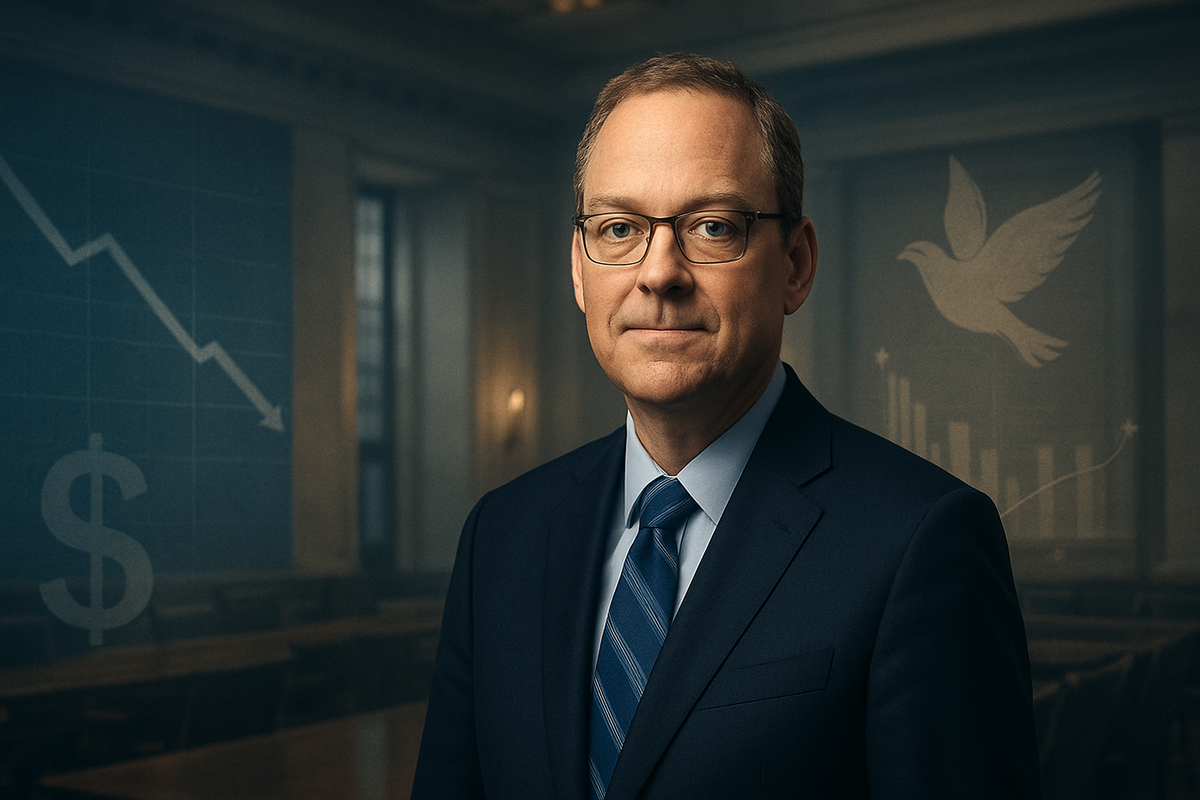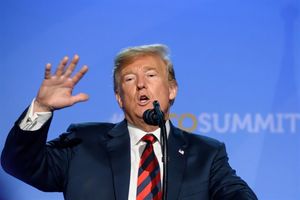
Washington D.C. – November 26, 2025 – The financial world is abuzz with the news that Kevin Hassett, a close economic advisor and staunch ally of former President Donald Trump, has emerged as the leading contender to become the next Chair of the Federal Reserve. This development, intensifying in late November 2025, signals a potential and significant pivot in U.S. monetary policy towards a more accommodative stance, with profound implications for interest rates, inflation expectations, and the broader economy.
Hassett, known for his "inflation dove" views, has openly advocated for lower interest rates, a philosophy that starkly contrasts with the more hawkish leanings often associated with central bank independence. His potential appointment to succeed current Fed Chair Jerome Powell, whose term concludes in May 2026, could usher in an era of aggressive rate cuts, potentially reshaping investment strategies and economic growth trajectories in the coming years.
A New Era for the Fed? Details Emerge on Hassett's Candidacy and Market Reactions
The speculation surrounding Kevin Hassett's (NYSE: HASS) potential ascent to the Federal Reserve chairmanship has reached a fever pitch in recent weeks. Hassett, who previously served as the Director of the National Economic Council and Chair of the Council of Economic Advisers during Trump's first term, is now widely considered the frontrunner to lead the nation's central bank. His candidacy aligns with President Donald Trump's long-standing desire for a more interventionist approach to monetary policy, often criticizing the Fed for not cutting rates more aggressively.
The timeline of this development solidified in late October 2025, when U.S. Treasury Secretary Scott Bessent confirmed that Hassett was on a shortlist of five potential nominees to replace Jerome Powell (NYSE: JPOW). President Trump is expected to make his definitive decision by the end of 2025, potentially around the Christmas holiday. Further underscoring the administration's intent to influence monetary policy, Stephen Miran, another key White White House economic adviser and a self-described "dove," was temporarily nominated to a vacant seat on the Federal Reserve Board of Governors in August 2025, a move widely interpreted as a strategic placement to push for lower rates.
Hassett's "inflation dove" stance is well-documented. On November 20, 2025, he publicly stated on Fox News that if he were at the helm of the Fed, he "would be cutting rates right now" because "the data suggests that we should." Analysts at BofA Securities (NYSE: BAC) have echoed this sentiment, predicting that Hassett would likely advocate for significant reductions, potentially bringing benchmark rates "well below 3%" if appointed. This perspective suggests a departure from the cautious approach to inflation management that has characterized recent Fed policy.
Initial reactions from financial markets have been mixed but largely reflective of anticipated rate cuts. Futures markets are already pricing in a third rate cut at the December meeting, following reductions in October and September 2025. The prospect of a Hassett-led Fed has generally been seen as a boost for risk assets, including equities and digital assets, as lower borrowing costs tend to make investments more attractive. However, concerns about the U.S. dollar's strength have also emerged; macro hedge fund manager Paul Tudor Jones (NYSE: PTJ) warned in June 2025 that a "super dove" Fed Chair could lead to a 10% depreciation of the U.S. dollar over the following year. Politically, commentators have raised alarms about the potential erosion of the Federal Reserve's independence, viewing such an appointment as a "macro risk" if markets perceive political influence over monetary decisions.
Corporate Winners and Losers in a Dovish Fed Environment
The prospect of Kevin Hassett taking the reins at the Federal Reserve and steering it towards a more dovish monetary policy has significant implications for various sectors and individual companies. A sustained period of lower interest rates and looser credit conditions typically creates both clear winners and potential losers in the corporate landscape.
Potential Winners:
- Growth Stocks and Technology Companies: Companies that rely heavily on future earnings growth and often carry higher debt loads, particularly in the technology sector, tend to thrive in low-interest-rate environments. Lower borrowing costs reduce their interest expenses, making it cheaper to fund expansion, research and development, and acquisitions. Companies like Microsoft (NASDAQ: MSFT), Apple (NASDAQ: AAPL), and Amazon (NASDAQ: AMZN) could see increased investor appetite as their future cash flows are discounted at a lower rate, boosting valuations.
- Real Estate and Construction: Lower mortgage rates make homeownership more affordable, stimulating demand in the housing market. This benefits homebuilders such as D.R. Horton (NYSE: DHI) and Lennar (NYSE: LEN), as well as real estate investment trusts (REITs) like Prologis (NYSE: PLG) and Simon Property Group (NYSE: SPG). Construction material suppliers and related service providers would also likely see increased activity.
- High-Leverage Companies: Businesses with substantial existing debt can benefit from refinancing at lower rates, reducing their debt servicing costs and improving profitability. Sectors with traditionally high leverage, such as utilities (e.g., Duke Energy (NYSE: DUK)) and certain industrial companies, could see a positive impact.
- Consumer Discretionary: Lower interest rates can encourage consumer spending by reducing the cost of borrowing for big-ticket items like cars and appliances, and by freeing up disposable income from reduced debt payments. This could benefit retailers like Walmart (NYSE: WMT) and Target (NYSE: TGT), and auto manufacturers such as Ford (NYSE: F) and General Motors (NYSE: GM).
Potential Losers:
- Financial Institutions (Banks): While lower rates can stimulate loan demand, they also compress net interest margins (NIMs), the difference between what banks earn on loans and what they pay on deposits. This can negatively impact the profitability of major banks like JPMorgan Chase (NYSE: JPM), Bank of America (NYSE: BAC), and Wells Fargo (NYSE: WFC).
- Value Stocks (in certain contexts): While not universally true, a strong preference for growth stocks in a low-rate environment can sometimes lead to underperformance for traditional value stocks, which are often mature companies with stable but slower growth.
- Companies Dependent on a Strong Dollar: A depreciating U.S. dollar, as warned by some analysts, could hurt companies that rely on importing goods or those that have significant dollar-denominated costs but earn revenues in other currencies.
- Fixed-Income Investors: While not a company, individuals and institutions relying on fixed-income investments (bonds) for income may see reduced returns as bond yields fall in a lower interest rate environment. This could push some investors into riskier assets.
The overall impact will depend on the magnitude and duration of any rate cuts, as well as the broader economic response to such a significant shift in monetary policy.
Wider Significance: Erosion of Independence and Historical Parallels
The potential appointment of Kevin Hassett as Federal Reserve Chair carries wider significance that extends beyond immediate market reactions, touching upon the fundamental principles of central bank independence and the broader trajectory of economic policy. This event fits into a growing global trend where political figures increasingly express desires to influence central bank decisions, raising questions about the long-term credibility and effectiveness of monetary policy.
One of the most significant concerns among economists and political commentators is the potential erosion of the Federal Reserve's independence. A central bank's ability to make decisions free from political pressure is widely considered crucial for maintaining price stability and fostering sustainable economic growth. Hassett's close ties to President Trump and his public alignment with the administration's desire for lower rates have fueled fears that the Fed could become more politicized. Critics warn that such interference could lead to "worse inflation and higher unemployment" in the long run, as the central bank might prioritize short-term political gains over sound economic principles. The Washington Post (NYSE: WPO) reported in July 2025 on the "Trump-era makeover" of Hassett, highlighting the worries among Fed watchers.
The ripple effects could extend to international confidence in the U.S. dollar and Treasury markets. If global investors perceive the Federal Reserve as bowing to political pressure, it could diminish the dollar's status as a reserve currency and lead to increased volatility in U.S. bond markets. This could, in turn, make it more expensive for the U.S. government to borrow, potentially exacerbating national debt concerns. Furthermore, other central banks around the world might feel emboldened to resist political pressures if the U.S. Fed maintains its independence, or conversely, might face similar pressures if the U.S. precedent is set.
Historically, there have been periods of tension between the executive branch and the Federal Reserve, but overt attempts to install a politically aligned "dove" at the helm are less common in modern history. One might draw parallels to the 1970s, a period marked by significant inflation and perceived political influence over monetary policy, though the circumstances are not identical. The current situation also contrasts with the strong emphasis on independence seen under Chairs like Paul Volcker (NYSE: VOKR) and Alan Greenspan (NYSE: GRNSPN), who were often lauded for making tough, unpopular decisions for the sake of long-term economic stability. The current debate underscores a critical juncture for the institution, testing the resilience of its established autonomy.
What Comes Next: Navigating a Potentially Dovish Future
The impending decision on the next Federal Reserve Chair sets the stage for a period of significant adaptation and potential shifts in market dynamics. Investors, businesses, and policymakers alike will need to closely monitor developments and prepare for various scenarios that could unfold in the short and long term.
In the short term, if Kevin Hassett is indeed appointed, markets are likely to react swiftly to the confirmation of a more dovish stance. We could see an immediate rally in growth stocks, particularly in technology and other rate-sensitive sectors, as the prospect of lower borrowing costs becomes more concrete. Conversely, the U.S. dollar might experience further depreciation, and yields on U.S. Treasuries could face downward pressure. Companies may begin to re-evaluate their capital expenditure plans, potentially accelerating investments if financing becomes cheaper. The Federal Reserve's December meeting will be crucial, as any statements or actions from the current board, in anticipation of a new Chair, could provide further clues about the immediate trajectory of monetary policy.
Looking at the long term, a Hassett-led Fed could lead to a sustained period of lower interest rates, potentially fueling economic growth but also raising concerns about inflation. Businesses will need to strategize around a potentially higher inflation environment, considering pricing power, supply chain resilience, and wage growth. Strategic pivots may be required for financial institutions to adapt to compressed net interest margins, possibly by focusing on fee-based services or exploring new revenue streams. Market opportunities could emerge in areas that benefit from sustained liquidity, such as private equity and venture capital, as investors seek higher returns in alternative assets. Challenges may include managing asset bubbles if low rates persist for too long, and maintaining international confidence in the U.S. economy amidst concerns about central bank independence.
Potential scenarios and outcomes range from a relatively smooth transition to a period of heightened volatility. One scenario involves Hassett taking a more moderate approach once in office, balancing his dovish inclinations with the institutional responsibilities of the Fed Chair. Another scenario could see aggressive rate cuts, leading to a strong economic boom followed by inflationary pressures that the Fed might struggle to contain without risking a recession. The market will closely watch for any signs of dissent within the Federal Open Market Committee (FOMC) and the new Chair's ability to build consensus, which will be vital for effective monetary policy implementation.
Comprehensive Wrap-Up: A Pivotal Moment for U.S. Monetary Policy
The potential appointment of Kevin Hassett as the next Federal Reserve Chair represents a truly pivotal moment for U.S. monetary policy and the global financial landscape. The key takeaway from this development is the strong signal for a shift towards a more "inflation dove" approach, characterized by a preference for lower interest rates and a looser monetary policy aimed at stimulating economic growth. This contrasts sharply with the cautious, inflation-targeting stance that has largely defined the Fed's recent history under Jerome Powell.
Moving forward, the market will undoubtedly be shaped by these anticipated policy changes. Investors should prepare for a potential environment of lower borrowing costs, which could favor growth-oriented equities, real estate, and companies with significant debt. Conversely, traditional banks may face margin pressures, and the U.S. dollar could experience depreciation. The overarching theme will be the tension between stimulating growth and managing potential inflationary risks, a balancing act that will define the new Fed Chair's tenure.
The lasting impact of this event will likely revolve around the perceived independence of the Federal Reserve. Should a Hassett appointment be seen as a direct politicization of the central bank, it could set a dangerous precedent, potentially undermining the institution's credibility and its ability to act as a stable anchor for the economy. This could have far-reaching consequences for investor confidence, both domestically and internationally.
What investors should watch for in the coming months includes the official announcement of the nomination, the Senate confirmation process, and critically, the new Chair's initial statements and actions regarding interest rates and inflation targets. Beyond that, observing the composition of the broader Federal Open Market Committee (FOMC) and any shifts in their voting patterns will provide further insight into the future direction of U.S. monetary policy. The market is entering a period of significant change, and vigilance will be key to navigating the opportunities and challenges that emerge.
This content is intended for informational purposes only and is not financial advice





